I was delighted that Peach brought this film to my attention: The Right to Know: America’s Adoption Crisis. It’s a documentary from 1990 by Michael Branton and Elizabeth Snider and narrated by Michael Reagan, son-via-adoption of Ronald Reagan and Jane Wyman.
I share below 12 highlights that impressed me (bolding is mine), and I urge that you devote 50 minutes to watching it to find the parts that impact you. Those who are currently dedicated to eradicating shame and secrecy in adoption are building on the work of these pioneers in openness. Here is an instructive look back from where we’ve come. Some has changed, and some has remained the same.
Bonus: Throughout we get to see some fabulous 1980s-1990s hairstyles and fashions in both men and women, and be reminded what some old-style computers looked like. Flashbacks galore!
1. The documentary starts with a clip from a 1950 film called Three Secrets.
“A plane crashes in California and a 5-year-old boy survives. Little else is known except the child is an orphan.
Susan Chase believes the boy could be hers. Before she was wed to lawyer Bill Chase, she was involved with a Marine during the war, and became suicidal later, putting their child up for adoption. Bill has never been told Susan’s secret.” — Wikipedia.
Two other women have reasons to believe the boy may be the one they gave birth to and relinquished.
We are in the maternity ward where a woman is counseling her daughter, Susan, to place her newborn son for adoption:
Woman: Don’t cheat your son, Susan. Think of the moment when he finds out [you weren’t married].
Susan: But giving him away. My own flesh and blood. It’s wrong, unnatural.
Woman: Living with an illegitimate child will be wrong and unnatural, too, only it will last the rest of your life. This will be over in a few months! It’s right and natural for every child to be brought up in a normal home.
Okey dokey. People really did believe that a child-ectomy was no different than an appendectomy, and that you’d get over both with equal ease.
2. Kathleen Silber, a name many may recognize from her advice in Adoptive Families magazine and from her books Dear Birthmother and Children of Open Adoption, comes in at 6:50, sharing the social worker’s perspective, historically speaking.
There was definitely an element of playing God. Agencies really felt like we knew what was in people’s best interest. And there were some fallacies in that. There were things we didn’t know at that time…Some social workers really got to like that power and control.
Agencies are all guilty of telling lies…we left out information…like alcoholism or other problems. We tended to only mention the positives and leave out the negatives. This was partially because we believed at the time that everything was environment, that it really didn’t matter if there were some of these problems in the background.
3. Another social worker (and author), Reuben Pannor, divulges the two big lies (about 9:10):
I would say to [adoptive] parents, “this is your child now” — which gave encouragement to denial, which in turn gave encouragement to the development of many serious problems for everyone That was the #1 lie.
The other biggest lie was to say to adoptive families: “We will guarantee you of anonymity and secrecy. Once you have completed your adoption, birth parents will not trouble you any more because records will be sealed and locked away and you will never hear from them again.”
4. Segueing back to Three Secrets, a scene in which a file is pulled from a file cabinet. It’s marked with the date of Susan’s baby’s birth.
“We placed four children on September 15.” says a matronly bureaucrat to a cohort. “But no one’s going to see those records. Not even ourselves.”
She places the unseen files into a bank vault and spins the dial (10:00).
5. At 16:15 we hear from Betty Jean Lifton, author of the influential Journey of the Adopted Self.
Even though a child is told they’re adopted, an adopted child soon learns that the adoptive parents don’t want to hear any questions about it. You’re supposed to play their game of “as if” — which is pretending that they’re really your mother and father. And in one sense they are, but they are your adoptive mother and father.
6. An adoptee explains how a person can have mixed feelings about adoption (18:35):
One minute you can feel great because your parents love you so much and the next minute you can feel terrible because your birth parents abandoned you.
7. Reuben Pannor says later (19:10):
We have a disproportionate number of adoptees in these facilities [mental health, correctional]. And this is precisely why we are now attempting to change the system, to unlocked sealed records, to move into a system that we think is much healthier — psychologically sound, emotionally sound — and that is an open system in adoption.
8. We are shown how adoptees decide to search and how the news of a search affects their adoptive parents. We see how adoptees connected with each other, how birth parents joined together, and how search angels worked to manifest connections of a different sort — all pre-Internet.
We see a birth mother and a birth father tell us how their decisions to relinquish felt in retrospect, and how small, ordinary moments can bring up the loss anew, despite the efforts to dissociate from a painful time in their lives.
9. Back to Three Secrets. Susan signs away her motherhood, with her mother and the bureaucrat overseeing (35:45). Oh, my (the filmmakers use dialog well here).
10. We learn of research that during the final stages of pregnancy women develop a heightened maternal preoccupation, which continues after the birth of the child. At 38:15 the narrator tells us that it’s also during this time that the child develops a sense of separate self.
Annette Baran, another adoption opener and author, reveals that “Most adoptees and birth parents suffered from a lack of the final stage of this heightened maternal preoccupation process. When the child is taken away at birth, neither one of them are able to complete the process. They become emotional amputees.“
11. We see examples of infantilizing adult adoptees starting around 43:45.
12. Kate Burke, then-president of the American Adoption Congress, talks about specifically who was tending the locks on keeping things closed and secret. Who were these Elites that made and enforced the rules for others? She adds, “We’re not afraid of each other. So you don’t have to be afraid for us” (47:35).
12. On the effects of search and reunion a few adoptees share: It makes you feel complete. I’m happier. I know myself better. When I reunited with my birth family, I got closer to my adoptive family (50:30).
The documentary ends with a plea for the public to begin to help change public policy (51:00). The fight continues as we head into 2014, for 41 states still have bureaucrats and Elites guarding vital records (inaccessible to those whom they are vital to) via metaphorical locks and bank vaults.
If you take the time to watch, I’m interested in knowing your thoughts about The Right to Know: America’s Adoption Crisis.
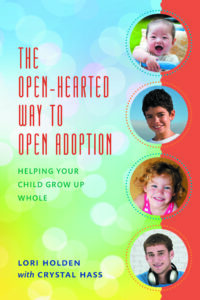
Lori Holden, mom of a young adult daughter and a young adult son, writes from Denver. She was honored as an Angel in Adoption® by the Congressional Coalition on Adoption Institute.
Her first book, The Open-Hearted Way to Open Adoption: Helping Your Child Grow Up Whole, makes a thoughtful anytime gift for the adoptive families in your life. Her second book, Standing Room Only: How to Be THAT Yoga Teacher is now available in paperback, and her third book, Adoption Unfiltered, is now available through your favorite bookseller!
Find Lori’s books on her Amazon Author page and catch episodes of Adoption: The Long View wherever you get your podcasts.

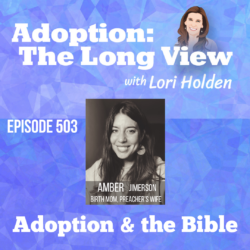
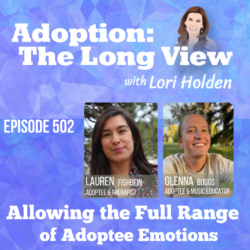
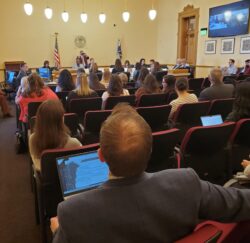
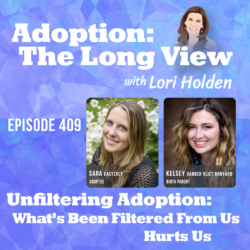
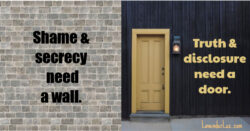
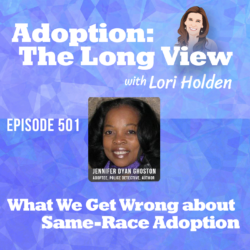
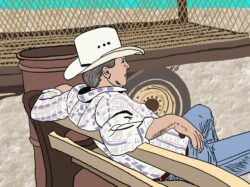
5 Responses
Wow — thank you for not only introducing us to the film (I hadn’t heard of it before this point), but breaking down those key moments.
Lori, Thank you so much for posting this video. I had never seen it before. I work as a fertility and adoption coach and this will be helpful in educating my clients around the pitfalls of a closed adoption. I was so moved by the tears of the birth father sharing his story, I started crying right along with him. What a sweet and sensitive soul. Thanks for sharing! Jenilyn
I hope your book becomes something many more will read on their adoption journey.
I don’t know much about adoption, as my husband and I don’t feel it is the right journey for us, but I can definitely see how an open adoption can be very beneficial for all.
Thank goodness for you, my friend. You’re helping so many people bring the entire adoption process forward. We still need a lot of change…while we’ve come from from when I was adopted and there was so much shame for my birth mother, there’s still so much that needs to happen. Your writing and sharing is helping to make that come true!
🙂
Kudos to your friend for telling you about this movie and to you for sharing about it, along with what struck you the most here. The Open Adoption community is blessed and lucky to have you, such a passionate and wise advocate. Keep up the awesome work!